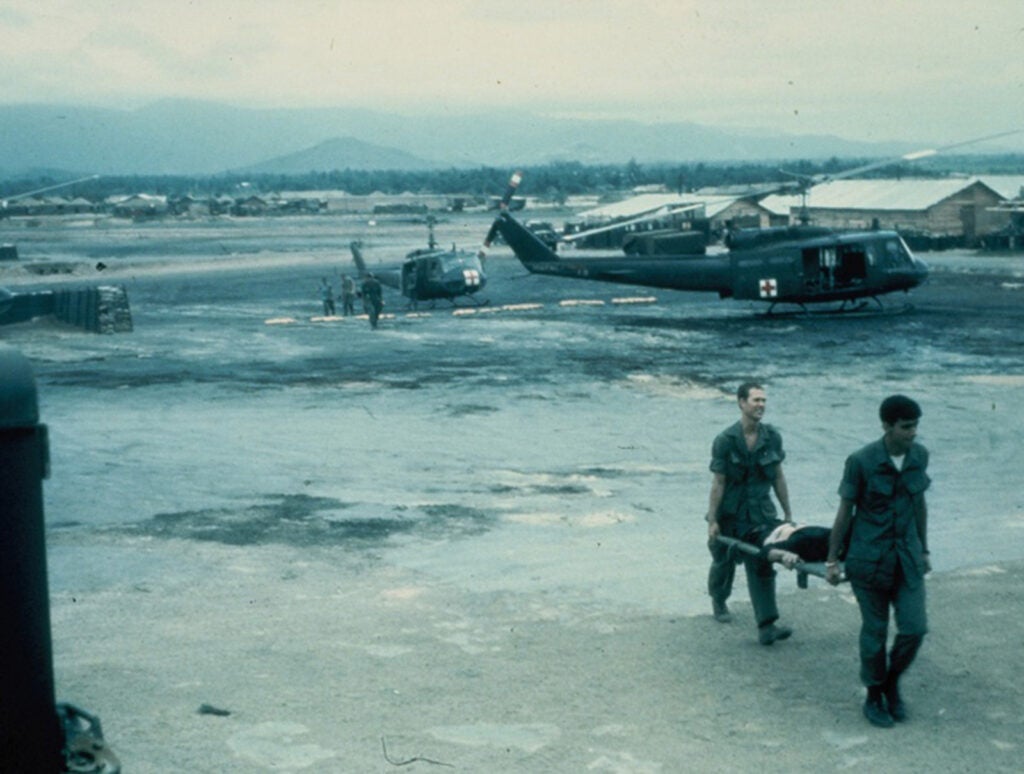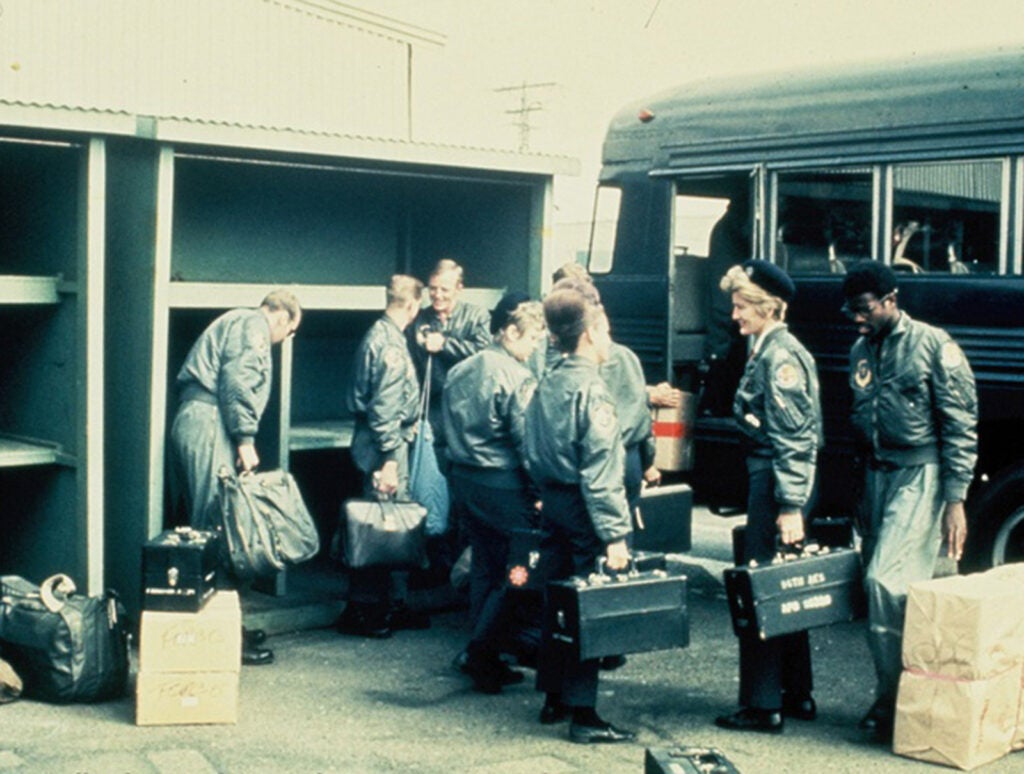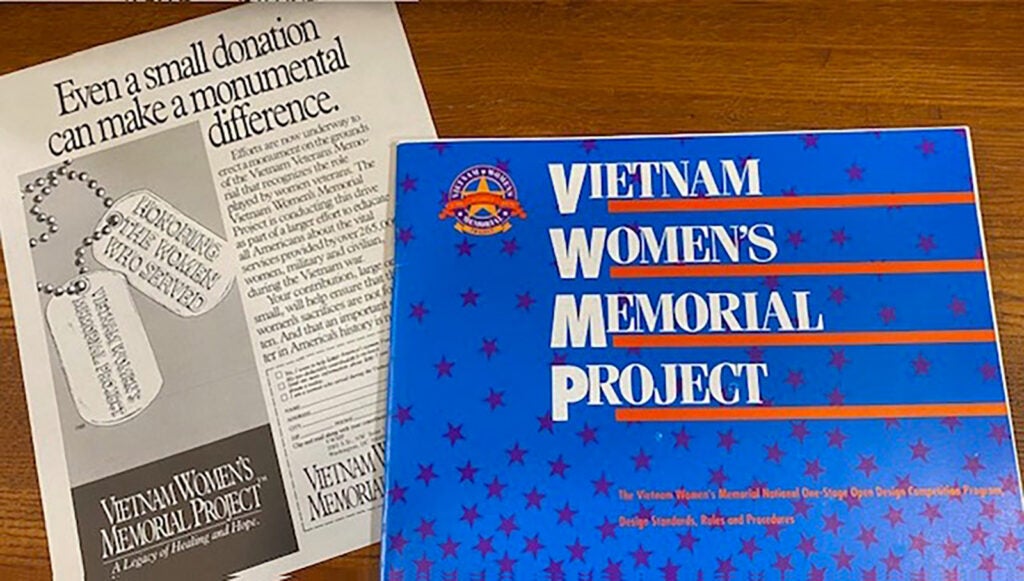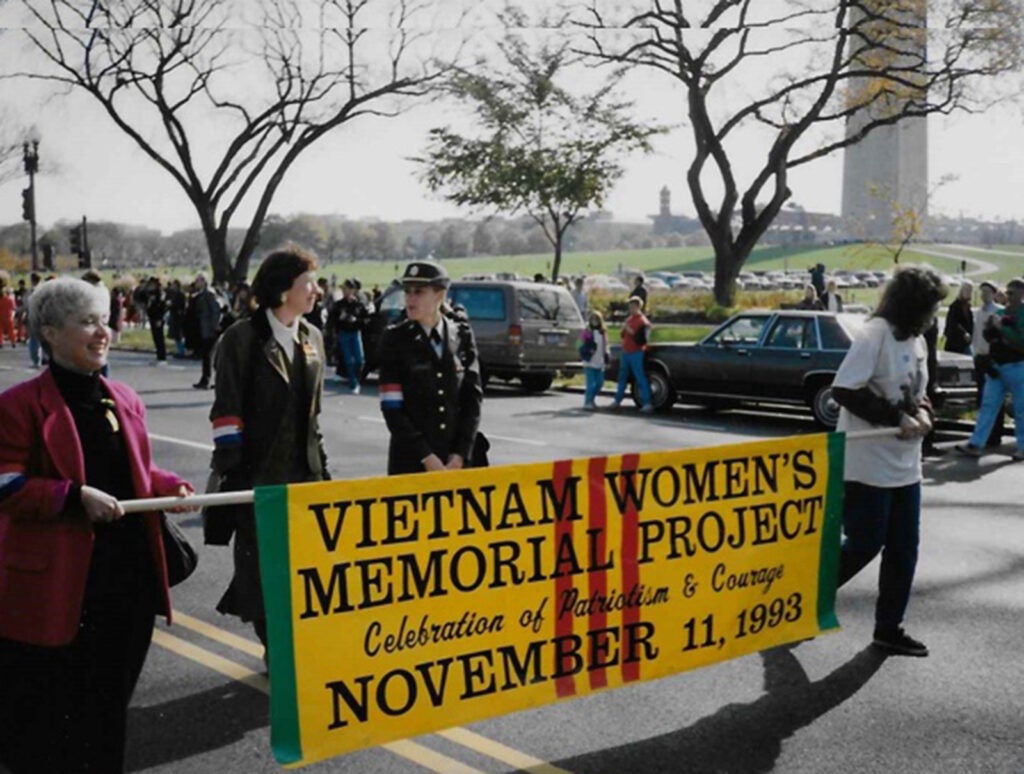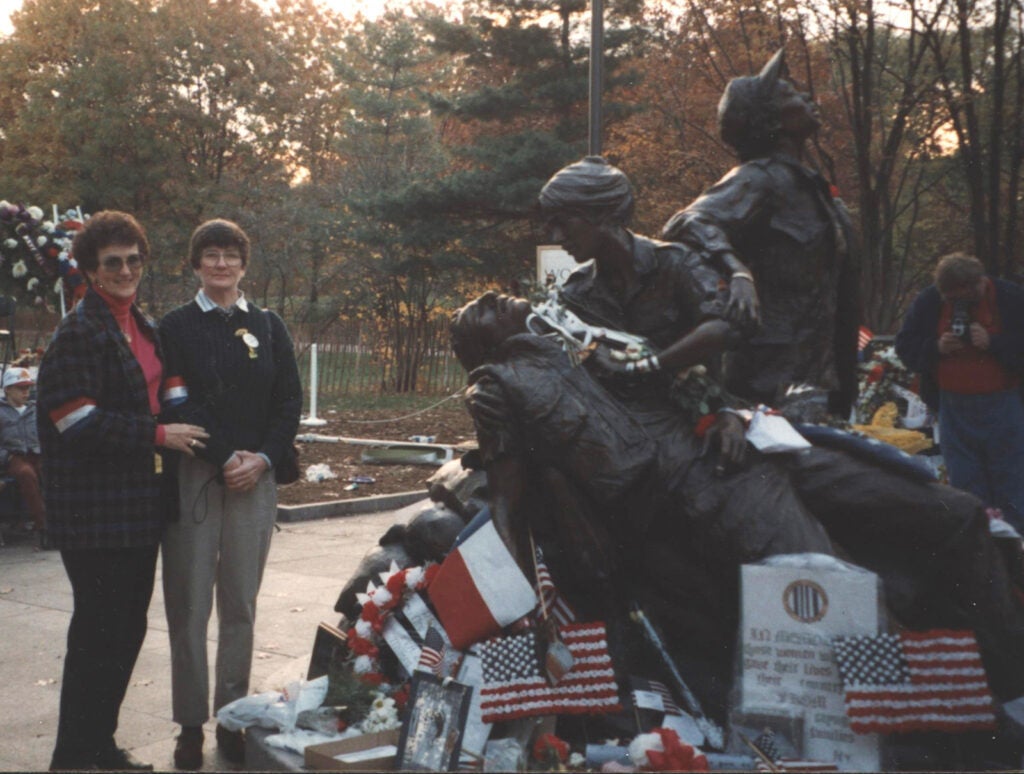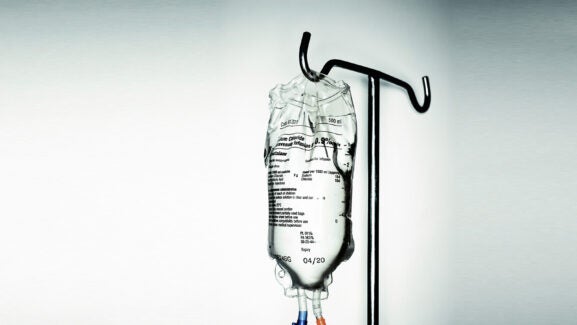
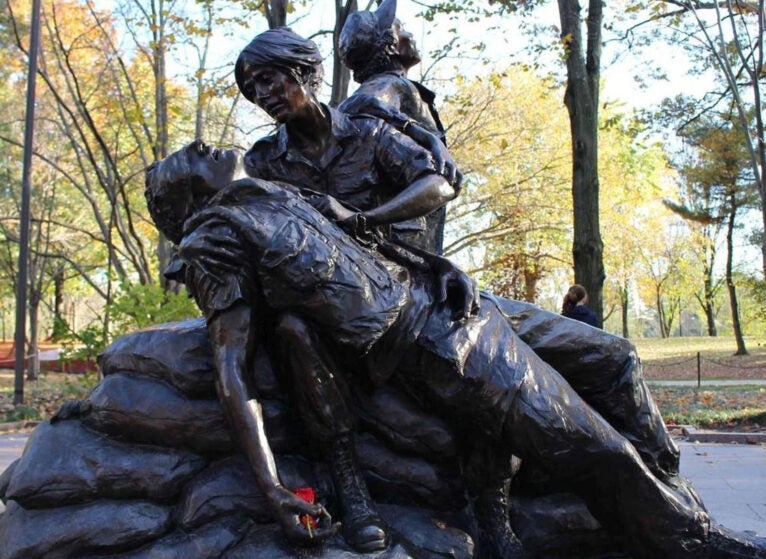
The Vietnam Women's Memorial in Washington, D.C. Courtesy of the National Park Service.
Flashback Friday: After Vietnam, the Ten-Year Battle to Honor Women Veterans
No official record exists of the number of nurses who served in Vietnam during the war. They were a largely invisible and unrecognized contingent of an unpopular war until their stories slowly began emerging with the advent of the Vietnam Women’s Memorial Project in the mid-1980s. Today, it’s generally estimated that 10,000 American military women were stationed there, 90% of them nurses.
Dianne M. Gagliano deployed to Vietnam in 1971, shortly after obtaining flight nurse certification from the U.S. Air Force School of Aerospace Medicine in San Antonio, Texas. She flew medical and humanitarian missions all over Southeast Asia, caring for critically injured troops and airlifting prisoners of war and orphaned children.
“We flew at all hours of the day and night and would cross ten time zones en route to the West Coast, as well as cross over the International Date Line,” recalled Gagliano, whose papers are archived in the Bjoring Center for Nursing Historical Inquiry. Combat casualties were airlifted to a U.S. Air Force medical center hub along Vietnam’s coast, while critically injured patients — such as those with head and spinal cord injuries—were flown back to the U.S. for treatment. “We had to anticipate each patient’s needs and ensure that all special equipment, needed supplies, and medications were provided in sufficient quantity for the duration of each patient’s flight,” she recalled. No diversions could be made for medical emergencies on these trans-Pacific crossings, which meant nurses had to improvise when supplies ran out or equipment malfunctioned.
During the Vietnam War, medical personnel dealt with extraordinary injuries that were inflicted by weapons specifically designed to mutilate and maim. More than 58,000 soldiers died in Vietnam; 350,000 were wounded. It speaks to the exceptionalism of nurses like Gagliano that soldiers who would have died in past wars from the severity of their injuries survived; the survival rate was 98 percent for casualties who were treated.
“Our greatest asset was that we were transporting the healthiest patient population that a medical team could hope for — at least 90 percent were in their twenties,” Gagliano reflected. “I encountered only one in-flight death among the more than 1,000 patients that I transported during my years in Vietnam.”
Gagliano’s papers also chronicle a lesser-known chapter stemming from that war: the contentious, decade-long battle by women veterans for representation at the Vietnam Veterans Memorial in Washington, D.C. “The Wall,” as it’s commonly called, was dedicated in 1982 and is etched with more than 58,000 names, including eight women nurses who died in Vietnam. But another element of the memorial, the bronze sculpture of three American infantrymen that honors the soldiers who came home, struck nurses like Diane Carlson Evans, who had served in Vietnam, as yet another example of historical erasure.
“The norm of leaving women out of the historical account of war had to change,” she said.
So Evans founded the non-profit Vietnam Women’s Memorial Project and gave her first campaign speech in 1983 to a Lions Club. It became a grassroots effort by a coalition of dedicated volunteers to convince government agencies, Congress, the media and the public about the need for a memorial. Veterans organizations endorsed the project, but elsewhere the opposition was strong and strident.
“Some engaged in vilifying our service and undermined our intent to honor women,” Evans wrote in a case study about the project. “We would be misjudged and our motives challenged, questioned, and discounted. It would be our role to teach, move the mission forward, and create a national consensus while overcoming ignorance and denial.”
The teaching moments were many. “Some said women had not been in combat, did not suffer, and were too few in number to be honored,” she recalled.
People did not know that many of the women who served in Vietnam faced enemy fire on a daily basis. There was no front in this guerrilla war, no possibility of being “safe behind our lines.” In fact, women were wounded in approximately the same proportion as men in the Vietnam theater. Military records indicate that 5.8% of women were wounded; 20% incurred service-related disabilities; and 8% were held prisoners of war. When they returned home from their tour of duty, nurses and other women who were stationed there (as physical therapists, dieticians, administrators, air traffic controllers, workers with the Red Cross and U.S. Agency for International Development) experienced the same hostile reception as their male colleagues.
Perhaps not surprisingly, nursing skills honed during wartime served them well as they navigated the bureaucratic roadblocks and harsh backlash their efforts generated. Patience, diplomacy, advocacy — such abilities were essential as they regrouped, adjusted lobbying tactics, and created new strategies to combat resistance, particularly to the proposed location on the Mall, within the 2.2-acre site of the Vietnam Veterans Memorial.
“To add a statue of a nurse to that extraordinary memorial… would create a serious symbolic imbalance in one of the nation’s pre-eminent commemorative places,” wrote Benjamin Forgey in an Oct. 22, 1987 Washington Post editorial. Others in the news media echoed that attitude, likening the project to “monumentitis.”
But members of the Vietnam Women’s Memorial Project were adamant about their choice of site. In 1988, when Congress finally did authorize the memorial but did not specify its placement on the Mall—stating only that it be established "on federal land in the District of Columbia or its environs”—Evans and her colleagues started the legislative process all over again. Their refusal to compromise added more years to what had already been an exhausting campaign, but they ultimately prevailed. Evans, Gagliano, and thousands of other women who had served in that war saw the Vietnam Women’s Memorial formally dedicated on Nov. 11, 1993 on the grounds of the Vietnam Veterans Memorial, just 300 feet from the statue of the three infantrymen and near the Wall.
Today’s #FlashbackFriday is brought to you by the Bjoring Center for Nursing Historical Inquiry at UVA, which is dedicated to the preservation and study of nursing history.
Latest News




